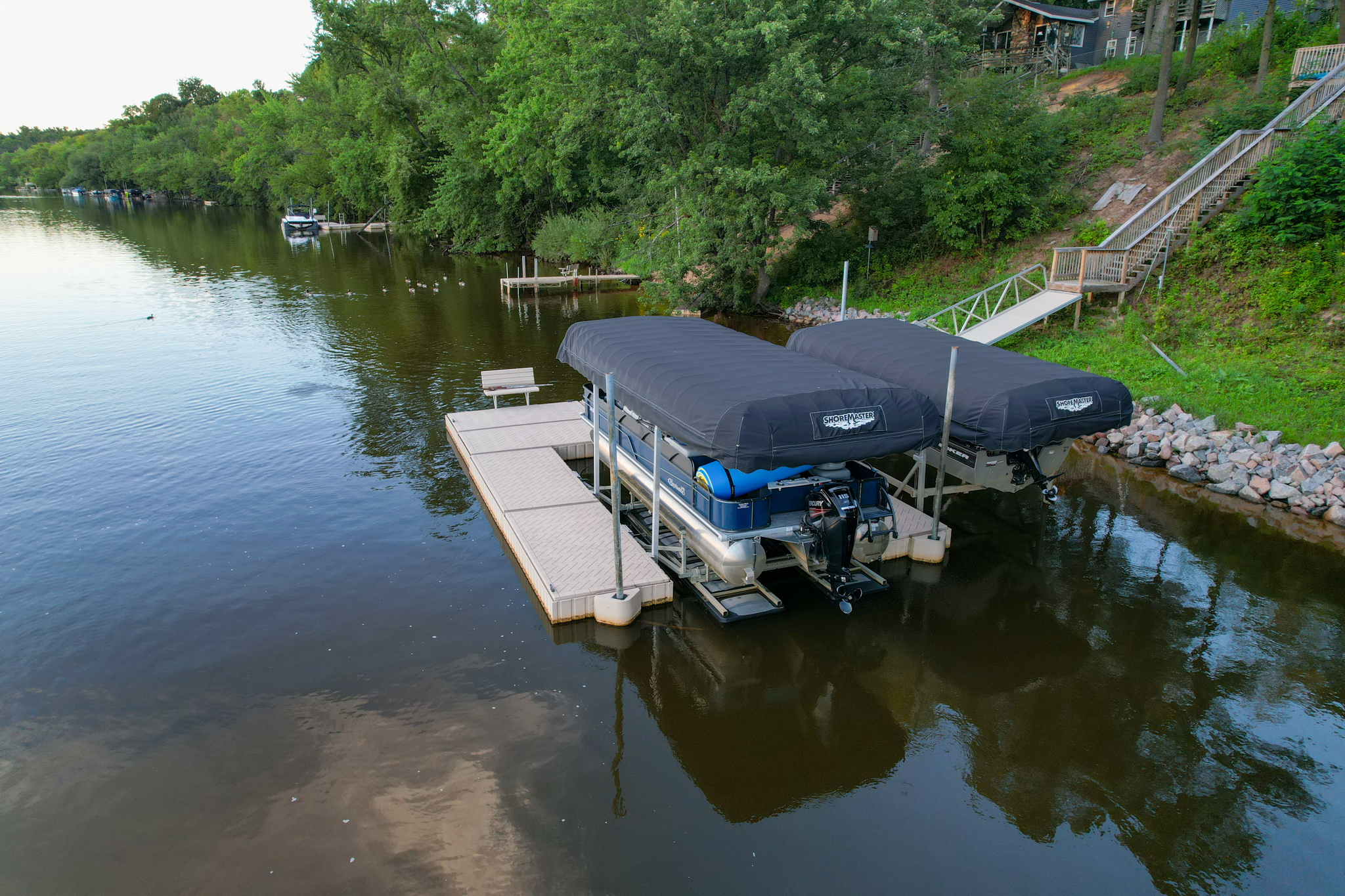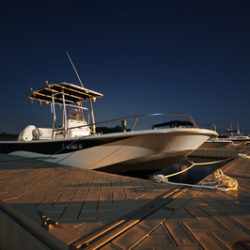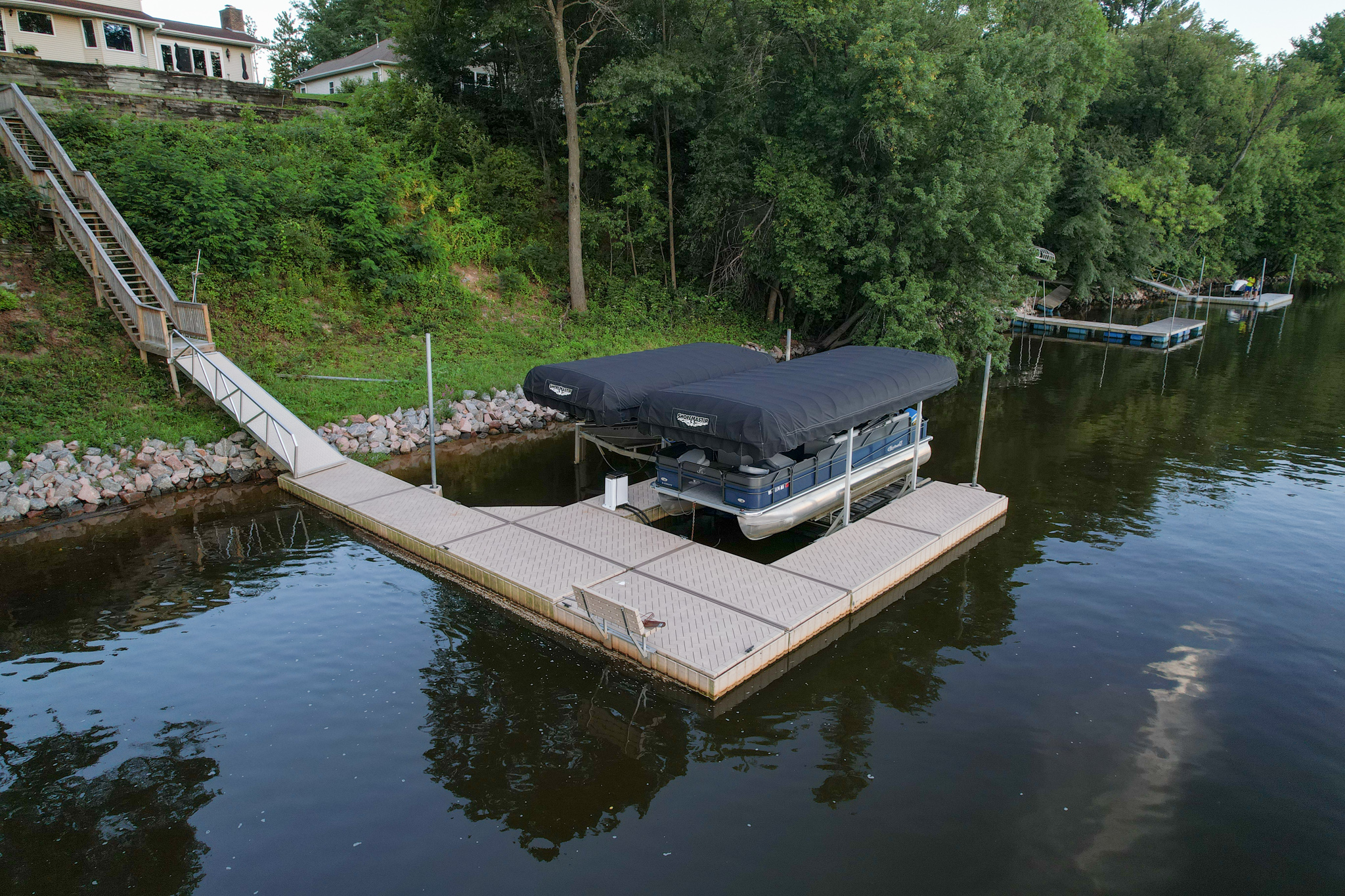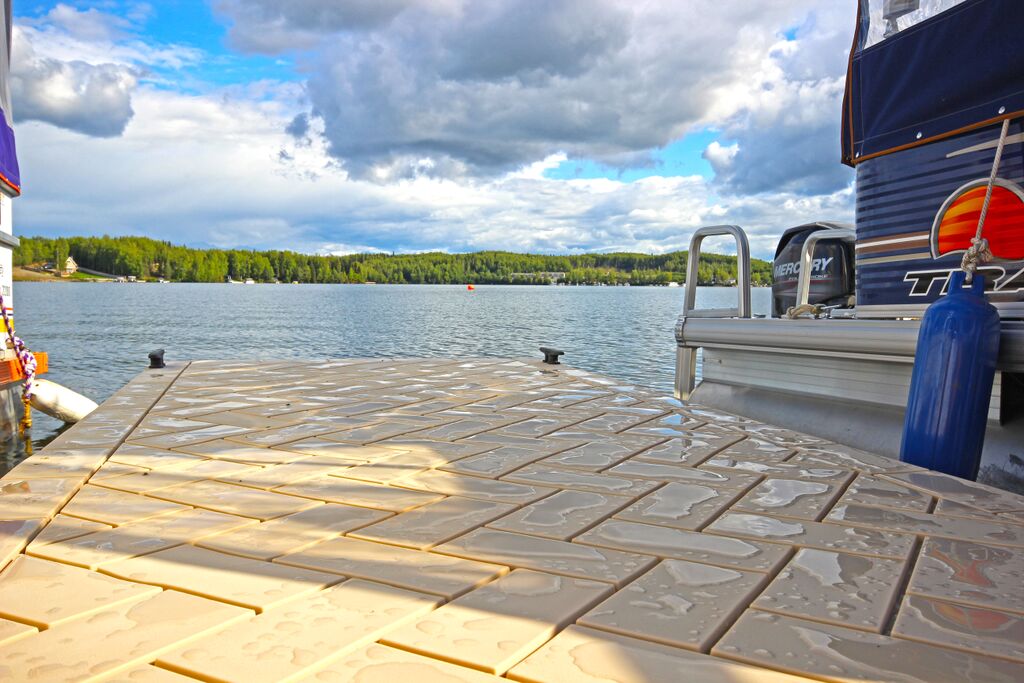Posted on July 17, 2025
Dock Safety Guide: How to Enhance Safety on Your Boat Dock
Written by PolyDock Products Marketing
As the likely backdrop for many lifelong memories, your waterfront haven should be as safe as possible, allowing everyone to enjoy it with the utmost peace of mind. Below, we provide a comprehensive guide for enhancing dock safety, so you and your loved ones can enjoy the spoils of waterfront living without unnecessary risks getting in the way.

Why Dock Safety Is Essential for Every Waterfront Property
Without the proper safety measures, docks can harbor inherent dangers. Slippery surfaces, tripping hazards, and exposed edges can all turn an otherwise lovely day into an unexpected trip to the emergency room. Fortunately, ensuring dock safety isn’t complicated. With a few simple measures and some thoughtful upgrades, you can build a waterfront space that’s not only functional and enjoyable but also safe for everyone who sets foot on it.
Top Boat Dock Safety Tips Everyone Should Follow
To help you get started, here are some general safety measures to put in place:
- Establish a No-Running Rule: Slippery surfaces and sudden drop-offs make running a major hazard on any waterfront structure. Put up highly visible graphic signs to create a visual cue that reinforces safer behavior without the need for constant reminders.
- Install Non-Slip Surfaces: Select slip-resistant decking materials and mats, or apply coatings to enhance traction, especially in high-traffic areas or where water tends to accumulate.
- Secure Dock Lines and Cords: Loose ropes, power cords, and hoses can quickly become trip hazards. Use hooks, reels, or cleats to keep walkways clear and safe at all times.
While these practices may seem rudimentary, they can go a long way in preventing accidents and creating a secure environment for all dock users.
Essential Boat Dock Safety Equipment You Should Have
There are boat dock accessories that are nice to have, and there are those that you simply must have.
- Dock Ladders: Installing sturdy, slip- and corrosion-resistant dock ladders facilitates safe and easy transitions to and from the water, whether swimming, kayaking, or hopping on a jet ski.
- Safety Railings: Adding railings to high-traffic or elevated dock sections helps prevent falls, especially for children, seniors, or guests unfamiliar with your setup.
- Life Rings or Throw Ropes: In the event of a fall into the water, having a life ring or rope within reach can be a literal lifesaver. Mount them in clearly visible and easily accessible locations.
- Emergency Kit: Keep a waterproof emergency kit nearby with basic first aid supplies, a whistle, and emergency contact information. We also recommend including a flashlight, phone charger, and thermal blanket.
Whether you’re outfitting a new dock or upgrading an existing setup, these safety-focused add-ons should be at the top of your checklist.
How to Childproof Your Dock for Family Safety
Waterfronts are a magical place for children—a core memory bank filled with laughter and sun-soaked adventure. But without the proper precautions, docks can also pose serious hazards to our curious little explorers.
Here are a few strategies to make your dock system safer for the young ones:
- Supervise at All Times: Adult supervision is still the most effective safety measure. Designate a “dock watcher” when children are near the water, and never assume someone else is keeping an eye out.
- Always Gear Up for Safety: All children near or on the dock should wear life jackets at all times, even if they’re not getting in the water. Keep life rings or throw ropes in clearly marked spots for quick access.
- Declutter The Dock: Keep dock lines, fishing equipment, water toys, and boating gear stowed away to minimize tripping hazards and prevent accidents.
- Create Clear Boundaries: Use visual cues like colorful signage, dock edge markers, or even painted zones to help kids understand where to walk and where to play.
With just a few adjustments, you can turn your dock into a safe extension of your home—a place where kids can build memories, learn to appreciate spending time in nature, and have fun.
Preventing Common Dock Hazards: Slips, Trips & Falls
Slips, trips, and falls are among the most common causes of dock-related injuries (OSHA, 2009). However, nearly all of them are entirely preventable. Waterfront environments naturally come with slick surfaces, shifting conditions, and the occasional forgotten hose or tackle box. That’s why proactive maintenance and mindful layouts are key to creating a safer dock experience.
Here’s how to address the most common culprits:
- Clean Surfaces Regularly: Algae, moss, and other marine growth can make docks dangerously slick, especially in shaded or low-traffic areas. Regularly clean the dock surface to prevent slippery buildup and sweep away debris like sand, leaves, or bird droppings to mitigate slipping hazards.
- Stay Ahead of Dock Repairs: Loose boards, warped decking, protruding nails, and damaged floats don’t just impact aesthetics, they can also pose real risks. Keep an eye out for these issues and address them promptly to avoid preventable accidents and costly repairs.
- Be Mindful of Changing Conditions: Rain, early morning dew, or even a dip in temperature can create slick surfaces. During high-risk conditions (such as heavy rains and storms), consider installing grip-enhancing mats and placing clear warning signs to alert visitors.
Remember, awareness and consistency are key to preventing slips, trips, and falls. A few minutes of dock maintenance here and there can save you from a far more serious situation later on.
Security Tips to Protect Your Dock and Its Users
Whether you're on a quiet inland lake or a busier marina, waterfront properties can be vulnerable to theft, trespassing, and even vandalism if left unmonitored. Fortunately, a few key upgrades can help safeguard your space, your investments, and your peace of mind.
- Install Motion-Activated Lighting: Aside from preventing slips and trips during low-light conditions, lighting can also deter unwanted visitors. Motion-activated or solar-powered dock lights illuminate pathways and entry points when triggered. Some advanced solutions even come with built-in alert features, such as sirens, flashing strobes, and smartphone notifications to further enhance security.
- Invest in a Dock Surveillance System: Modern security cameras designed for outdoor and marine environments can give you eyes on your dock 24/7. Many systems offer live streaming, night vision, and mobile alerts, so you can check in anytime—whether you're across the lake or across the country.
- Secure Valuable Equipment: From fishing gear and kayaks to watercraft batteries, docks often store high-value, portable items. Use lockable storage boxes, tamper-resistant cable locks, and dock lockers to protect valuables when in use. If you'll be away for any extended period, remove expensive items entirely to prevent theft or weather-related damage.
Finally, trusty signage and barriers help establish that your dock is private property. Often, a simple “No Trespassing” sign or gates at entry points can deter wandering passersby from unintentionally crossing into private space.
Seasonal Dock Safety: Summer, Storms & Winter Prep
Dock safety concerns shift with the seasons. For instance, summer’s increased foot traffic, higher UV exposure, and intensified activities require more frequent inspections to maintain dock safety and integrity. Meanwhile, storm season adds the risk of rising water levels, strong winds, and floating debris (which may require installing a floating dock stabilizer). As winter approaches, those in colder climates may need to install bubblers and de-icers or remove the dock entirely to prevent ice damage.
No matter the season, a little foresight and proactive prep can go a long way in protecting your dock and its users year-round.
Why PolyDock Products Help You Stay Safer
Safety is engineered into every aspect of the PolyDock system, beginning with the surface you walk on. We've designed a proprietary slip-resistant texture featuring a brick-herringbone pattern and a shot-peen finish, ensuring a sure-footed grip for your family and guests in any weather. This immediate sense of security is enhanced by the dock’s unique design, which includes recessed pockets and connection points that enhance stability underfoot.
Combined with its rotationally molded high-density polyethylene construction, these features provide a remarkably stable platform, minimizing wobbling and creating a confident walking experience whether you’re boarding your boat, helping the kids up after an afternoon dip, or performing routine maintenance (RotoMold USA, n.d.). Moreover, PolyDock’s innovative modular design allows you to easily add, move, and reposition essential safety accessories like handrails, ladders, ramps, and gangways exactly where you need them.
When you choose PolyDock, you’re not just getting one of the most reliable floating dock systems on the market, you’re getting a waterfront that can evolve with you. Ready to experience the PolyDock difference? Contact us today to discuss your requirements, and we’ll help you find floating docks for sale near you.
FAQs
-
Can I install dock safety gear myself or should I hire a professional?
PolyDock uses a connection plate system to attach dock accessories seamlessly. This system is designed for simplicity and ease of use, allowing accessories to be securely mounted anywhere along the dock perimeter without requiring special tools.
-
How often should I inspect my dock for safety issues?
We recommend inspecting the entire dock system at the beginning and end of every season and after extreme weather events. Regular monthly walk-throughs can also help catch small issues—like loose boards or slick surfaces—before they become safety hazards.
References:
- Occupational Health and Safety Administration (2009). Deck and Barge Safety. Retrieved from https://www.osha.gov/sites/default/files/publications/3358deck-barge-safety.pdf
- RotoMold USA (n.d.). What is Rotational Molding? Retrieved from https://rotomoldusa.com/rotomold/#:~:text=Definition,slowly%2C%20both%20vertically%20and%20horizontally.




